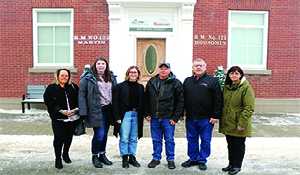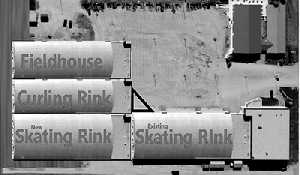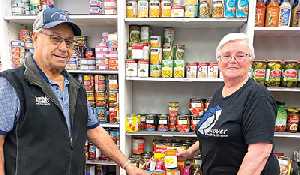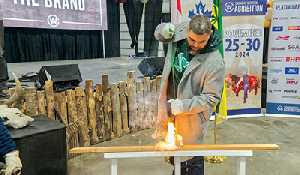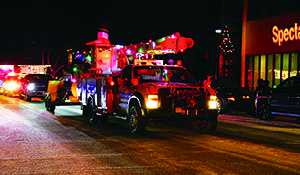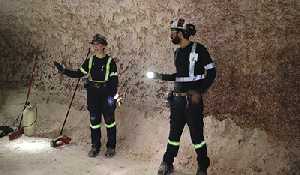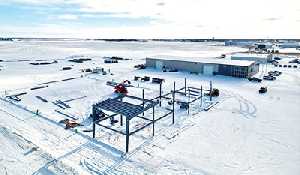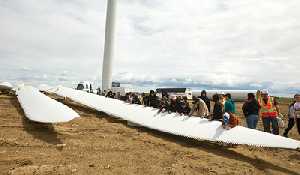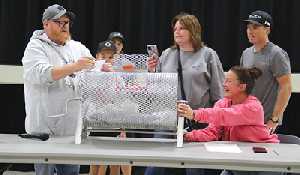TransCanada Energy East proposal: Tank farm construction slated for 2016-2017
October 16, 2013, 2:00 am
Kevin Weedmark


The construction of a tank farm at the Moosomin compressor station would be a two-year project involving about 150 construction workers at its peak, Moosomin Chamber of Commerce members heard Tuesday.
Construction of the 1.05 million barrel tank farm next to TransCanada’s Moosomin Compressor Station would take place from the beginning of 2016 through the end of 2017.
At the same time, TransCanada would be building a feeder pipeline between the Moosomin Compressor Station and Cromer, Manitoba—just southeast of Kola.
The entire Energy East project is dependent on National Energy Board approval. An application will be submitted to the National Energy Board in 2014.
If the project is approved, the work in this area would be scheduled for just after another major pipeline project, Enbridge’s Line 3 Replacement Program, which would involve replacing one line in Enbridge’s system across southeastern Saskatchewan. That project would begin in 2015 and continue into 2016.
TransCanada stakeholder relations official Darren Paquin and tank farm project manager Cody Knorr spoke to a full house at the Moosomin Chamber of Commerce meeting Tuesday.
Paquin explained how Energy East will fit into TransCanada’s system.
He noted that one of the pipes running through the Moosomin area has already been converted from natural gas to oil as part of the Keystone project—which now carries one-third of Canada’s oil exports to the United States—and a second pipe would be converted as part of Energy East.
“Energy East is a 4,400 km project that will move 1.1 million barrels a day of crude oil from Alberta and Saskatchewan to refineries in Eastern Canada,” Paquin explained. “Right now, 75 per cent of the oil refined in Eastern Canada is imported. Energy East would link Western Canadian production with eastern refineries.
“We’re looking at a facility north of town that would be a tank terminal. It would definitely create very important and diverse options for producers
TransCanada launched its consultation process on Energy East in April, will submit an application to the National Energy Board in 2014, and anticipates regulatory approval in 2015.
Paquin said TransCanada works hard to cause as little environmental impact as possible. “Our ongoing goal is to cause as little disturbance to the environment as possible,” he said. “We adhere to the strictest environmental guidelines, because we want to preserve important natural and cultural features at each step.
“At Hardisty, in preparing for a pipeline project, we found an ancient buffalo pound. We then found pottery and a lot of ancient artifacts that are very rare to the area. We brought in First Nations, and we rerouted that pipeline to a different area to go around those sites.
“We actually do the studies and if something is found, we will go around it.
“We conduct extensive environmental studies, and we collaborate with local communities and aboriginal groups while collecting environmental data, and we re-establish the essential characteristics of land post-construction including equivalent land use.”
He said that Energy East will be one of the most technologically advanced pipelines ever built.
“It’ll detect anything you can possibly imagine on this pipeline,” he said.
“There will be safety valves every 30 km. The valves are continuously monitored, and any irregularities we take very seriously, and they will be checked out.”
Knorr, who is project manager in charge of the terminals at Moosomin and Hardisty, explained the Moosomin facility would be a receipt and delivery terminal.
“The facility would receive Cromer crude for injection on the Energy East mainline,” he said. “Product will be delivered via a 16-inch pipeline from the Cromer area.
“The tank terminal will be a new build approximately 200 metres from the existing TransCanada compressor station. We will do everything we can to minimize the footprint and the environmental impact. The new construction will share some of the same utilities as the compressor station—power, water source, etc.
“The facility footprint will be approximately 100 acres, so about two-thirds of a quarter section.
“The facility will consist of three 350,000 barrel tanks.
“One of these tanks is 200 feet in diameter and 60 feet high.”
The facility will include a fire protection pond and fire equipment.
Knorr said construction could begin soon after regulatory approval is obtained.
“Assuming regulatory approval in the fourth quarter of 2015, we would see construction start in the first or second quarter of 2016, and the project would be completed and commissioned in the fourth quarter of 2017.
“We would see sustained construction activity from the beginning of 2016 to the end of 2017. Our projected labor requirements would be a peak of 150 people.”
The target in-service date for Energy East is 2017 for delivery to Quebec and 2018 to New Brunswick.
There will be a few permanent jobs at the Moosomin terminal once it is operating.
“There will be operational staff—the number of people I would guess to be five to six people during business hours,” Knorr said.
“We will have some maintenance staff on hand, who will check on the monitors to make sure everything looks good, will walk the facility and will conduct routine maintenance on wearing parts such as pumps and valves.”
TransCanada is also paying attention to security at the site.
“It will be a fenced facility, and we will have closed circuit cameras,” Knorr said. “It’s as secure as we can make it.”





